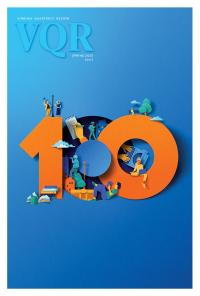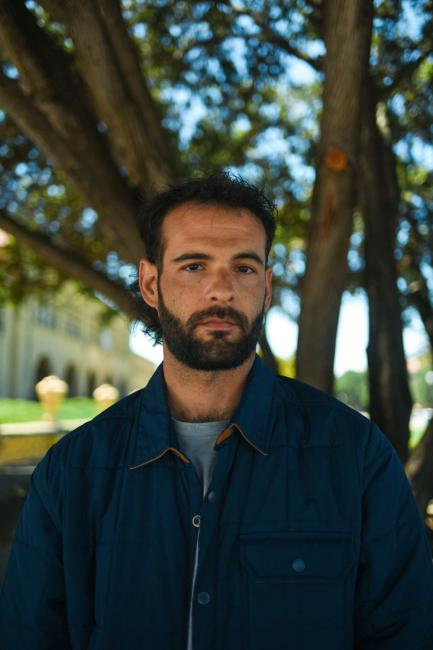
Tisch, 1962. Oil on canvas.
For once in California the rain is total. The bay a different shade of sky, Payne’s Gray.
On the train to the museum, at the Embarcadero stop with my father, I start to get emotional. Tender as ever, having told a woman who loves me I cannot, or can no longer, love her.
I want him to see but he doesn’t. I ask instead if there’s anything in particular he’d like to see at MoMA. Photography or sculpture. Abstract painting.
I walk until I find a room to be alone in, a room full of Richter. Nostalgia, says the wall. Erasure. History. A sense of displacement. I take a picture of the plaque.
The paintings in this room are based on photographs. Behind me, a rendering of his wife, the artist Sabine Moritz, reading a magazine. In front of me, the cloud—the vast smudge obscuring the white table—is not paint, as I’d assumed, but turpentine. It says on the wall.
Rain just audible from the gallery bridge. It’s slow, slowing, but refuses an altogether break.
My father, later, will tell me of a piece on another floor called Vortex, a warped and convex sheet of lacquered fiberglass. It’s a mirror, he will say, but you can’t see yourself.
The intimacy of a crowded museum is not unlike the intimacy of an empty room. Having feelings. Watching them pass.
I stay here until my father texts that he’s seen what he’s needed to see. Through occasional gaps, seams in the crowd, I can see him standing by the stairs. He asks where he can meet me. If I’m hungry. Do I know how to get home from here.

